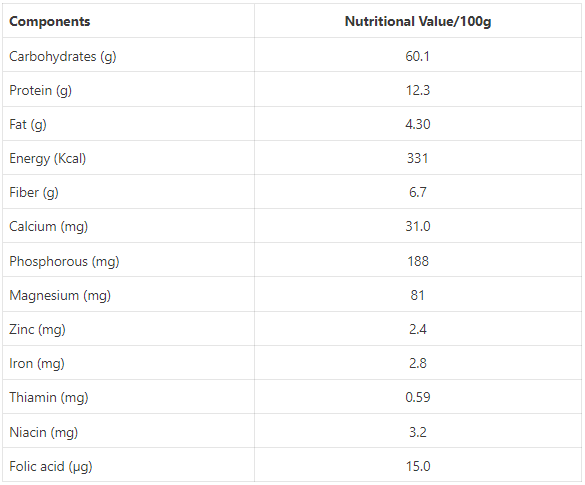Introduction about millets and foxtail millets
Millets have the potential to help with food security and nutrition, but they are still underutilized.
Foxtail millet is the second-largest millet crop, grown for food in Asia’s semi-arid tropics and forage in Europe, North America, Australia, and North Africa.
The goal of this study was to look at the Physico-chemical, functional, and nutritional composition of foxtail millet, barnyard millet, and rice, as well as compare the sensory quality and nutritional value of food products made from foxtail and barnyard millet and rice.
The water absorption capacities of foxtail millet, barnyard millet, and rice were 1.90, 1.96, and 1.98 ml/g, respectively, and the water solubility index was 2.8, 1.2, and 1.0 percent.
Viscosity was measured for foxtail millet (1650.6 cps), barnyard millet (1581 cps), and rice (1668.3 cps). Analysis of nutritional composition showed that the moisture content of foxtail millet, barnyard millet, and rice was 9.35, 11.93, and 11.91 %, respectively.
Nutritional value of Foxtail millet and its benefit
Nutritional value of foxtail millet

Health benefits of Foxtail millets fibre
- Proper functioning of the Heart: Vitamin B1 in Foxtail Millet aids in the synthesis of the neurotransmitter acetylcholine. It aids in the transmission of messages from muscles to neurons. It aids in the regulation of blood pressure, lowering the risk of heart blockage. A lack of vitamin B1 causes the heart to operate incorrectly.
- Proper functioning of the Nervous System: The protein content of Foxtail Millet is 12.3 g per 100 gm of grain. Protein is necessary for the nervous system to operate properly.
- Helps in the weight loss journey: Obesity and overweight are on the rise as a result of a lack of dietary diversity in our diet. Increasingly refined cereals and packaged foods heavy in salt, sugar, and fats are becoming more popular. Obesity or overweight is a condition that affects the urban population more than the rural. The high dietary fiber content of foxtail millet aids with weight management. It also contains Tryptophan, an amino acid that slows digestion and keeps us from eating too many calories. We might claim that it provides us a feeling of fullness in our stomach and prevents us from overeating.
- Helps in controlling Diabetes: In comparison to wheat and rice, Foxtail Millet has a low glycemic index (GI), which means it elevates blood sugar slowly in the body. More research and studies are needed to determine the benefits of foxtail millet. Patients who ate Foxtail Millet dosa had lower sugar levels than those who ate rice-based dosa, according to a study done by M V Hospital for Diabetes on 105 patients with 2 types of diabetes.
- Helps in maintaining Strong Bones: The calcium content of Foxtail Millet is 31 mg per 100 g of grain. Calcium contributes to the health of our bones. Long-term calcium insufficiency causes osteoporosis, dental problems, and even changes in the brain.
- Helps in building Strong Immunity: Everyone nowadays is interested in boosting their immunity. Foxtail millet is high in vitamins and minerals, which help to enhance our immune system. Fighting illnesses necessitates a high level of immunity. As a result, incorporating foxtail millet into your diet will boost your immunity.
- Helps in Brain Growth: Iron is necessary for brain oxygenation and prevents Alzheimer’s disease, and Foxtail Millet has 2.8 mg of iron per 100 gm.
- Good for Skin: Foxtail millet is high in amino acids, which assist to stimulate collagen production and reduce the appearance of wrinkles on the skin. As a result, it gives us skin that is healthy, youthful, and wrinkle-free.
- Helps in good Digestion: Foxtail millet has 6.7 grams of fibre, which keeps us healthy and prevents constipation.



